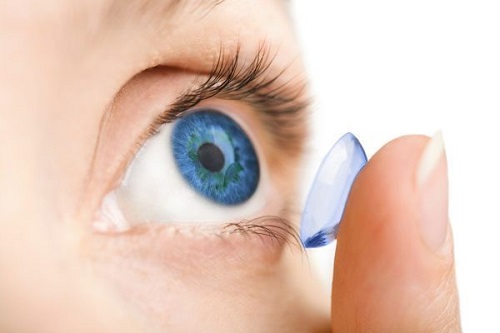Imagine wearing a contact lens while you sleep and removing it in the morning to enjoy clear, comfortable vision the rest of the day. Orthokeratology, or ortho-k, uses a specially designed rigid gas permeable contact lens that gently reshapes the front surface of the eye while you sleep. This safe and effective treatment is a great alternative to LASIK for those who do not want the risk or expense of surgery.
How Does Ortho-K work?
When a person cannot see clearly, it is because their eye is too long, too short or the surface is misshaped. Images appear blurred because they fail to focus on the retina (back surface of the eye). To create an ortho-k lens, the front surface of the eye is mapped using a high-tech instrument called a topographer. This allows the doctor to create a specially designed ortho-k lens to address the patient’s unique vision problem. The lens is then manufactured from a highly oxygen permeable material which allows the eye to breathe overnight and maintain excellent health. This corneal reshaping lens has multiple specialized curves that gently reshape the front of the eye and allow it to focus sharp images on the retina. The result is clear, crisp vision upon awaking and removing the lens.

Who is a Candidate for Ortho-K?
Using today’s technology, we can correct low to moderate amounts of nearsightedness and astigmatism. Some patients are even candidates to have their presbyopia corrected, which would minimize or eliminate their dependency for reading glasses.
How Long Does Ortho-K Last?
Corneal reshaping typically last 2-3 days, or longer. It depends on the amount of nearsightedness initially corrected. The more nearsighted the patient was starting out, the quicker the cornea reverts to its original shape. It is usually advised to wear ortho-k lenses nightly.
Why Ortho-K?
Individuals physically active will benefit the most from corneal reshaping. Sport goggles are cumbersome and can negatively affect athletic performance. Contact lenses can dry up and fall out during physical activity. Water sports can be especially challenging with prescription goggles or contact lenses. Orthokeratology addresses these concerns and allows for peak physical performance without the distraction of goggles or contact lenses.

Certain contact lenses can disrupt the tears as they spread over the surface of the eye, causing them to evaporate quickly. This results in symptoms of dry eye and fluctuating vision. Patients fit with ortho-k contact lenses will not experience these contact lens related problems. Also, these patients are less likely to have eye infections or irritation from airborne particles getting behind their contact lenses. Therefore, ortho-k is ideal for anyone who spends a lot of time outside, in dusty environments or are prone to allergies.
Children and Ortho-K
Children diagnosed with nearsightedness are the best candidates for corneal reshaping. In addition to the previously mentioned benefits of a glasses and contact lens free lifestyle, which is especially important for children, ortho-k may slow the progression of nearsightedness in children (myopia control). There are multiple sight threatening complications of being highly nearsighted; such as, glaucoma, macular degeneration and retinal detachments. The risk of theses complications later in life can be lessened by reducing nearsightedness in adolescence. To learn more, visit Myopia Control and Kids.
Corneal Refractive Therapy (CRT)
While there are various orthokeratology lens options available, the doctors at The Koetting Associates utilize a proprietary fitting technique called Corneal Refractive Therapy (CRT). Doctors who fit CRT ortho-k lenses are required to complete a training and certification process. Theses lenses are carefully designed to provide patients with excellent vision and a consistent lens fit. CRT ortho-k lenses have been the gold standard in corneal reshaping for many years.





